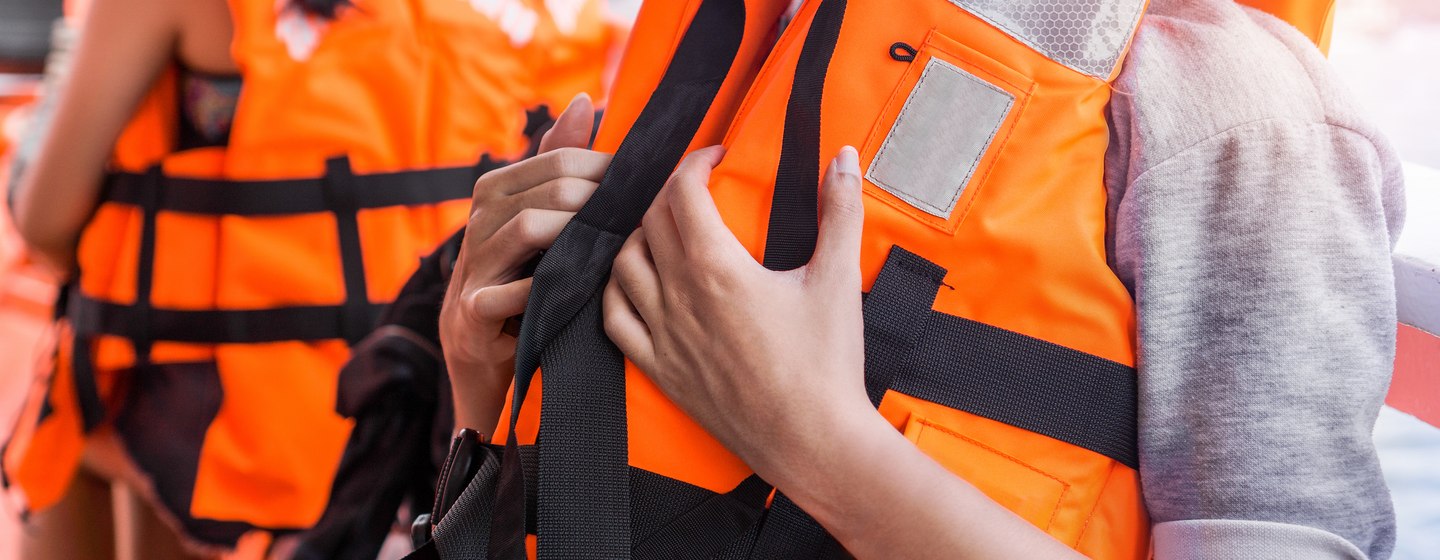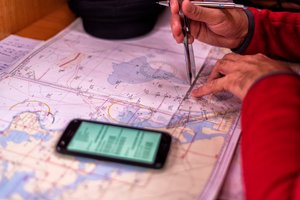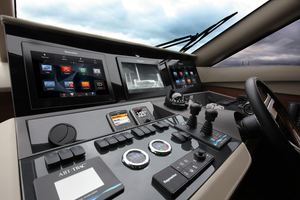Adhering to the guidelines of Safety of Lives at Sea (SOLAS) should be the ultimate goal for every yacht owner. Carrying the correct safety equipment onboard and ensuring it is serviced regularly is paramount.
While yachting is generally a safe activity, unforeseen incidents can happen. With so many variables in play, accidents can occur even on the most well-prepared yacht, particularly due to the human factor.
The frequency of your boat use increases the chances of encountering unexpected situations. Just like insurance, safety kits may seem unnecessary and costly when you don’t need it, but priceless when you do.
When safety is first, you last."
A plane will never take off without the obligatory safety brief and it’s likely a frequent flyer will be able to quote the instructions verbatim; just like a plane, a yacht must have consistent safety instructions given to new guests onboard a yacht, and serve as a reminder for regular visitors.
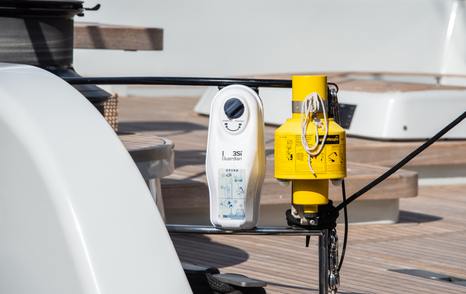
The location of all the onboard safety equipment should be well-marked and known to all crew, including the yacht owner and their family.
Store essential emergency items in a grab bag for quick deployment to a liferaft during critical situations.
The crew should run periodic safety drills, ensuring familiarity with the emergency equipment, for example how to deploy a liferaft, or use a fire extinguisher.
This preparedness offers peace of mind, even if seldom needed.
In this article:
The Essentials
A fundamental aspect of ensuring a secure and worry-free voyage is the presence of well-maintained safety equipment aboard your yacht. These essential tools and gear act as your lifeline in emergencies, offering a sense of reassurance that's invaluable when navigating the open waters.
Fortunately, this isn’t a list we have to create from scratch; maritime law dictates much of the equipment list. Practical experience and, to a certain extent common sense, may lead to additional safety gear considerations.
In this guide, we'll delve into the items of safety equipment on a yacht, exploring how it can make a world of difference in safeguarding passengers and crew, and providing peace of mind throughout your maritime adventures.
Anchor Ball - A Clear Signal
An anchor ball, though not typical safety gear, is essential on a yacht for clear and compliant navigation.
It signals to other vessels that your yacht is anchored. This visual cue helps avoid collisions when the yacht is at anchor.
An anchor ball consists of a round, black sphere-shaped object that should be easily raised and lowered. The ‘ball’ is often supplied as two black plastic discs that are interlocked at 90 degrees to give the appearance of a ball.
Designed to be highly visible and easily recognizable by other vessels on the water, its solid black colour contrasts with the surrounding environment. On any yacht, the anchor ball should be displayed at the bow or foredeck.
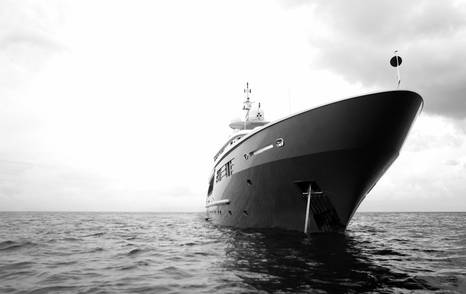
The massive yacht was aglow like a holiday tree.
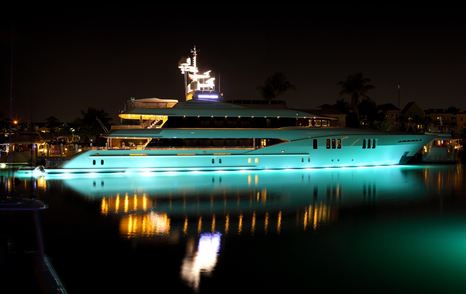
At night, when the anchor ball day shape is not visible, a yacht should display an all-around white light to signify that it is at anchor. Larger yachts, exceeding 50 meters in length, will exhibit two all-around white lights, while those over 100 meters will supplement these lights with additional deck illumination.
It is often found that yachts of such considerable size are as brightly lit as a holiday tree, complete with underwater lights and stylish deck lighting. The risk of collision is therefore unlikely, although not unusual.
Protect Your Crew Against Carbon Monoxide
Carbon monoxide is a silent and odourless gas generated during the combustion of fuels like diesel, petrol, and LPG.
If your yacht relies on any form of combustion,at least one carbon monoxide alarm must be installed. From engines and diesel heaters to gas stoves, various onboard appliances can emit this dangerous gas.
Without an alarm, everyone onboard could be at risk of exposure. You and your crew could be slowly gassed to death and no one on board would know anything about it.
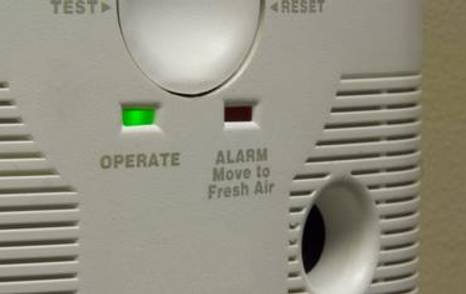
Distress Flares - Safety is Bright
Distress flares are an indispensable component of maritime safety equipment, and are mandated by regulations worldwide. These essentials serve as a cry for help in emergency situations at sea, where communication may be limited.

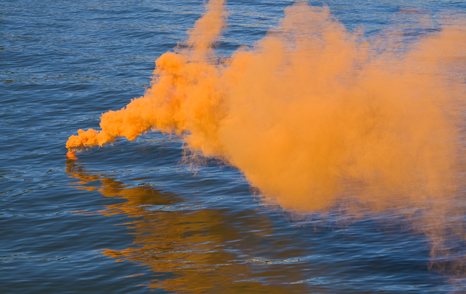
Pyrotechnic
There are primarily three types of distress flares: parachute flares, hand-held flares, and smoke signals, each designed for specific scenarios.
Parachute flares ascend high into the sky, creating a brilliant, long-lasting light visible from great distances so are used when out of sight of land, or other vessels.
Hand-held flares emit a bright and intense red light when ignited, ideal for signaling distress in close proximity or during nighttime rescues. The flare will burn hot, so holding downwind and away from your face is the advised method of deployment; wearing a specific glove will help protect the flare bearer.
The smoke signal flare will release dense, orange-coloured smoke, making them highly effective for daytime distress signaling. The dull orange smoke produced will not be seen at night unless by a search and rescue aircraft with heat-seeking capability.
LED
LED and laser flares are a modern and eco-friendly alternative to traditional pyrotechnics. These electronic flares utilise batteries and emit intense flashing light, typically with a range of just a few miles. What sets them apart is their extended shelf life and operational duration, outlasting short-lived pyrotechnic options.
However, it's essential to note that LED and laser flares are not officially recognised as distress signals by maritime authorities, as yet.
Distress flares should be deployed when immediate assistance is required, such as when a vessel is in danger, adrift, or experiencing a life-threatening situation. The use of which type of flare should be considered at the time; there is little point in burning a red handheld flare in the middle of the Atlantic Ocean without a vessel in sight.
Yacht crew are encouraged to familiarise themselves with the flare pack, their proper usage, and expiration dates to ensure they function effectively when needed.
Fire Blankets - The First Line of Defence Against Galley Fires
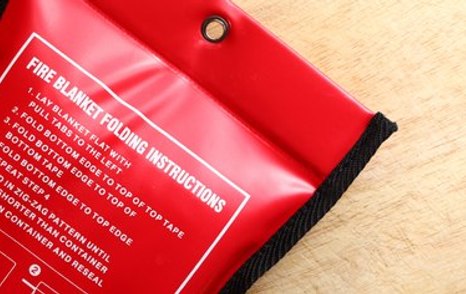
A fire blanket can make a significant difference in containing and extinguishing small fires before they escalate into dangerous situations. Simple and effective, fire blankets are situated in the galley where cooking-related fires are common.
Carefully placing a fire blanket over the flames quickly smothers the fire, cutting off its oxygen supply and extinguishing it. Additionally, fire blankets are useful for wrapping around a person whose clothing has caught fire, effectively smothering the flames and preventing severe burns.
Yacht Safety Essentials - Fire Extinguishers Onboard
Fire is a constant, potentially catastrophic threat to yachts, capable of rapid destruction. While not always able to fully extinguish a blaze, effective use of a fire extinguisher may buy crucial time for escape.
Understanding how to effectively deploy a fire extinguisher can mean the difference between a controlled situation and a potential disaster at sea.
Fire extinguishers are valuable tools, but they have limitations, particularly with larger or rapidly spreading fires.

Knowing when it's time to prioritise personal safety and evacuate, instead of attempting to fight a fire with an extinguisher, is a critical aspect of fire safety on a yacht.
Many yachts come with sophisticated automatic fire systems, yet maritime law dictates the provision of individual fire extinguishers strategically located in every cabin, living space, and also within exterior lockers. Proper placement of fire extinguishers is crucial for quick access in case of an emergency.
It is imperative to have an automatic extinguisher permanently installed in the engine compartment or engine room, where fire risks are particularly high.
For engine bays, gaseous extinguishers utilising fire-suppressing agents are considered the best choice. These agents are non-corrosive and can penetrate electrical components and an engine's air intake and combustion cylinders without adverse effects, which cannot be said for dry powder.
Every professional yacht crew will attend a course in fire prevention and fire fighting, with advanced course options available.
First Aid Kits at Sea - A Lifeline
Accidents can happen anywhere, at any time; however, when at sea, access to emergency care can potentially be days away.
Preparation is key and can make all the difference between a minor incident and a potential emergency. Having a well-equipped first aid kit onboard a yacht and ensuring that crew members are trained in its use is of paramount importance for maritime safety.

A well-stocked and maintained first aid kit serves as a vital lifeline, providing immediate care for injuries and illnesses that may occur while at sea. With a fully trained professional yacht crew onboard, first aid assistance can be administered swiftly and effectively, potentially preventing more severe consequences.
Proper maintenance is also vital; if something is taken from the kit, it must be logged and replaced at the earliest opportunity, even down to an aspirin.
Many superyachts engage telemedical support services that not only provide the medical kits and crew training for use onboard, but essential reassurance and advice 24/7.
Early Warning System - The Importance of Gas Alarms Onboard
A gas alarm fitted onboard a yacht plays a critical role in detecting potentially hazardous gas leaks.
Leaks can occur in various areas of the yacht, predominantly in the galley, where gas stoves are commonly used, in addition to the engine room, where fuel-related gases may accumulate.
Without a gas alarm, crew members and passengers may be exposed to the risks of gas poisoning, explosions, or fires.
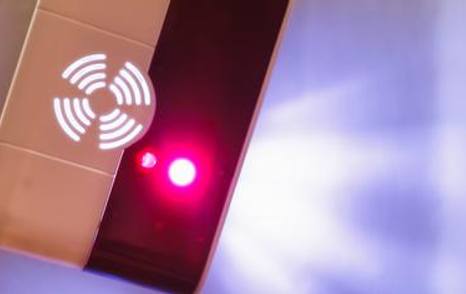
When a gas alarm sounds, it serves as an early warning system, alerting everyone onboard to the presence of dangerous gases. In such situations, it is crucial to follow immediate safety protocols, including shutting off the gas supply, ventilating the affected area, and evacuating to a safe location.
Gas is heavier than air, which means that in the event of a gas leak on a yacht, the gas will tend to sink to the lowest point, which is often the bilges. This characteristic of gas makes it less likely to dissipate naturally. As a result, the bilges become a potential reservoir for hazardous gases.
Emergency Essentials - The Grab Bag
Ideally in a brightly coloured, designated waterproof container, a grab bag is filled with essential emergency equipment and supplies and serves as a lifeline during critical situations at sea.
A well-prepared grab bag typically includes items like flares, a torch, a small first aid kit, a whistle and a signaling mirror for attracting attention, a handheld VHF radio, seasickness tablets, and other survival gear.
It's an indispensable asset on a yacht because it provides immediate access to crucial resources in a crisis, whether it's for signaling distress, administering first aid, or communicating with rescue services.
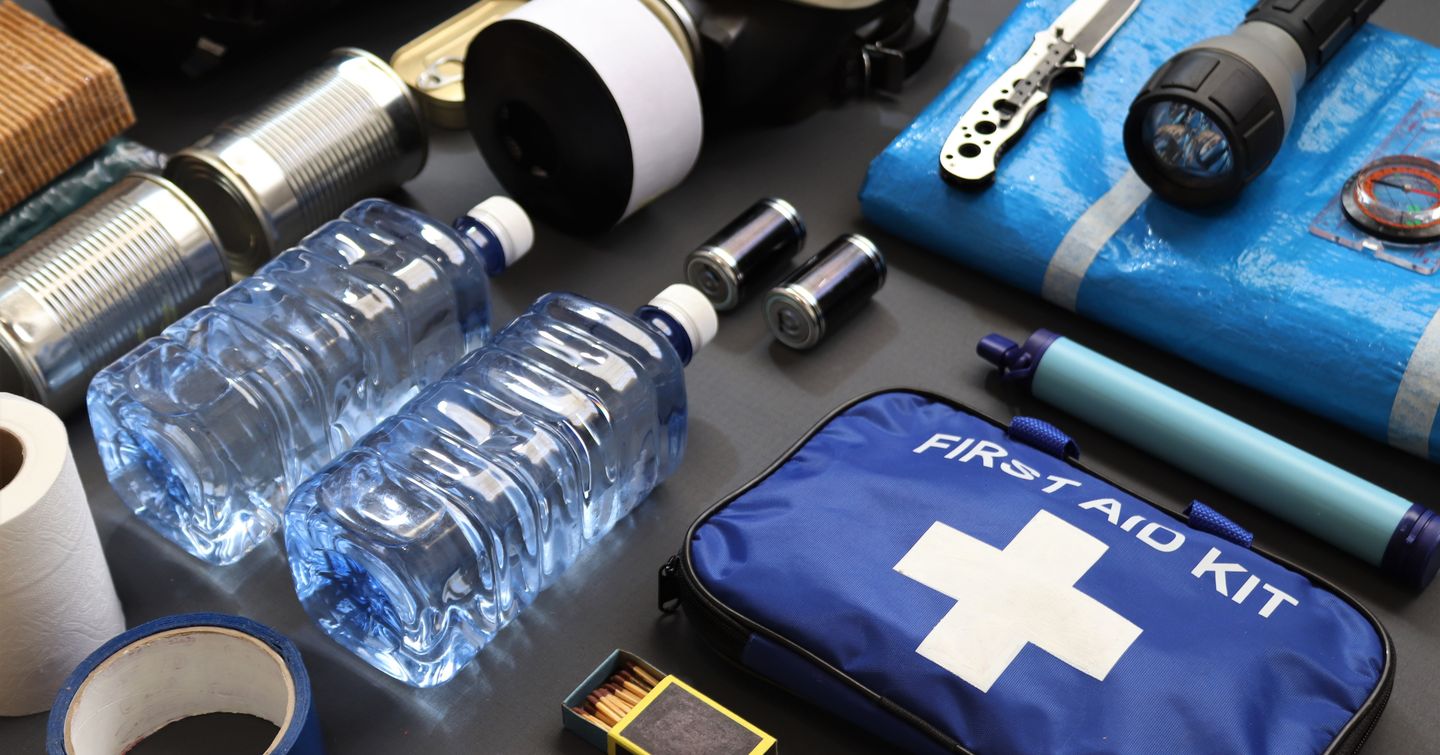
A grab bag should be stored outside on the yacht, in a secure, clearly marked locker, that can easily be ‘grabbed’ when abandoning to liferaft. Discussing the grab bag, and familiarising with its contents, gives crew and regular guests onboard the opportunity to add small personal items such as specific medication, or a spare pair of glasses and copies of passports.
There are legal guidelines that dictate the minimum contents of a grab bag. To ensure compliance with safety regulations, grab bags can either be purchased as pre-packed kits or, in addition, be customized to suit the specific needs of the yacht, its cruising location, and the anticipated distance from shore or potential rescue resources.
Stay Connected at Sea with a VHF Handheld Radio
In the expanse of open water, where communication with land or other vessels can be limited, this compact handheld device becomes a lifeline for maritime safety. It allows for direct and immediate communication with nearby vessels, and rescue services in case of emergencies.
It is standard equipment for yacht crew to carry at all times.
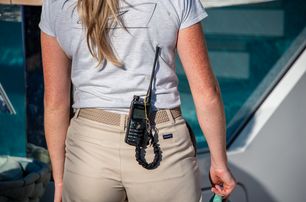

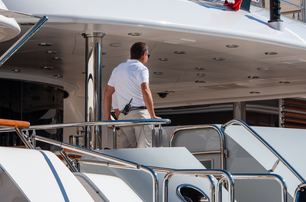
Whilst every yacht will also have a fixed VHF (Very High Frequency) radio set for regular communication with fellow boaters and authorities, a hand-held VHF offers self-sufficiency in the event of a ship's radio or power system failure, or when abandoning the vessel. See the grab bag article above.
VHF handheld radios reliably operate on dedicated marine frequencies, providing clear and efficient communication even in adverse conditions. Whether you're ondeck navigating busy harbours and speaking to the marina staff, in open oceans, or remote coastal areas, having a VHF handheld radio onboard ensures that you're never truly isolated at sea.
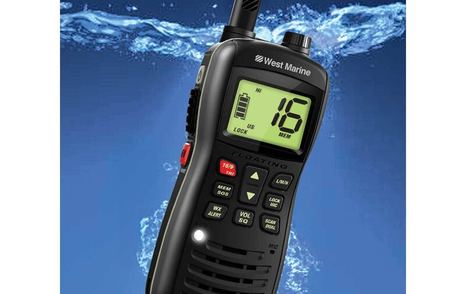
For the handheld VHF radio you will keep in your grab bag, opt for a waterproof unit, as it's designed to withstand the marine environment, and remember to regularly top up its charge. A spare battery set, in a waterproof container, is a good idea.
This could probably go without saying, but just in case, always secure the wrist strap when using a handheld radio at sea to prevent accidental drops overboard.
Extend Your Vision - The Power of Binoculars
Having a pair of binoculars onboard a yacht is a practical necessity for any seafarer. These optical tools offer a heightened view of the surrounding waters, allowing you to spot potential hazards, other vessels, and navigational markers from a greater distance. In an open sea, where visibility can be limited, binoculars become your eyes on the horizon, enhancing situational awareness and safety.
Under the International Regulations for the Prevention of Collision at Sea (IRPCS), the rules dictate that a lookout is maintained at all times. Binoculars are required onboard to aid watchkeeping.
Safety aside, binoculars are more than just a navigational aid; they also enhance the enjoyment of your yachting experience. Whether you're admiring coastal landscapes or observing wildlife, binoculars bring distant objects closer, so beyond their practical utility, they contribute to the overall pleasure of being out on the water, making them a worthy addition to any yacht's equipment inventory.
On the Edge - The Necessity of a Good Sharp Knife
Outside of the galley or bar, a sharp knife should only be required for emergency use.
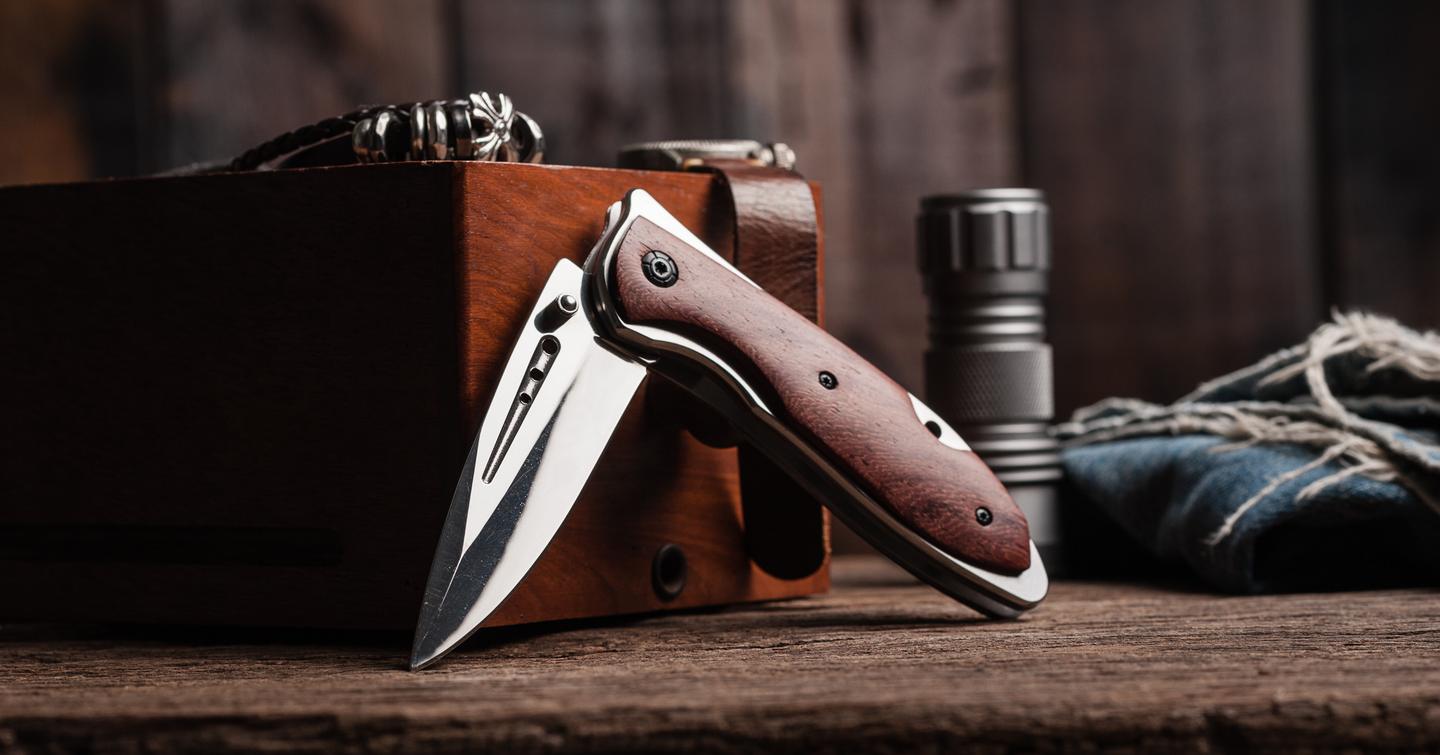
Cutting a tangled line under load or rapidly releasing the liferaft from the yacht, a sharp knife, preferably with a protected blade and blunt point, is an essential piece of yachting kit.
If standing in the chandlery and wondering what to buy, a blunt-tip knife allows for cutting ropes, straps, and other materials without the risk of accidental punctures or cuts, ensuring a safer and more controlled environment in emergency situations at sea.
Survival Aids - Lifebuoys on Yachts
Lifebuoys are buoyant rings that can be swiftly detached from the yacht and thrown to a person in the water in a ‘man overboard’ situation. The lifebuoy provides buoyancy and a highly visible marker to indicate the position of the casualty. Holding onto a lifebuoy offers essential support while awaiting rescue, instilling a sense of security for the person in the water.

If someone falls into the water unintentionally, for example in a harbour, whilst it may not be an emergency situation, lifebuoys offer valuable visibility for other water users.
Lifebuoys should be equipped with reflective materials and lights to enhance visibility, particularly during nighttime or low-light conditions, helping rescuers locate individuals in the water quickly. Additionally, some lifebuoys feature an orange floating line to secure the casualty and potentially bring them closer to the vessel.
Lifebuoys come in three basic varieties: horseshoe, ring, or inflatable. Compliance with the yacht's flag state requirements may dictate the type onboard, with a minimum of two typically mandated for safety.
Lifejackets - Life Saving Essentials
A lifejacket serves as a critical flotation device. There are two distinct styles: the cost-effective foam-based version primarily worn during emergencies and the sleek, comfortable body harness that can be worn continuously and inflates when needed.
Regardless of style, their purpose remains consistent: to keep you afloat and ensure your head and airway stay above water in case of unconsciousness, but their effectiveness hinges on being worn.
Useless unless worn."
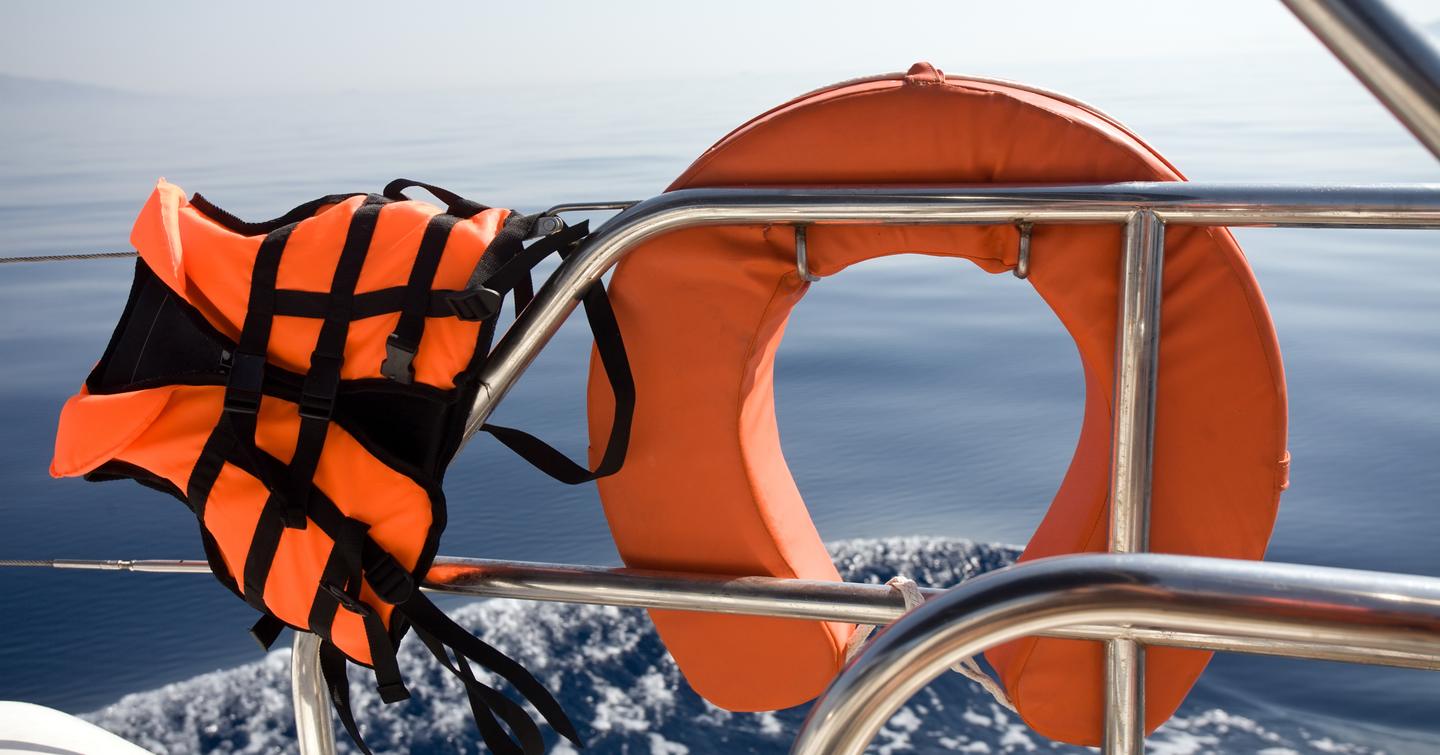
It's essential to have a lifejacket for every person on board, plus an additional two or 10% of the number required onboard, whichever is the larger. Ideally, the lifejackets should be distributed and fitted upon arrival, becoming the responsibility of each individual throughout the trip, and kept stowed for easy access. Regular maintenance is essential, with annual servicing and periodic wear checks.
Inflatable lifejackets come in two varieties: manual and automatic. Both use a compressed CO2 cartridge for inflation, but only the automatic type activates upon contact with water without user intervention. For added safety, consider models with crotch straps, as they provide better support in the water, a hood to prevent water intake to the airway, and a light to the lifejacket's bladder for enhanced nighttime visibility.
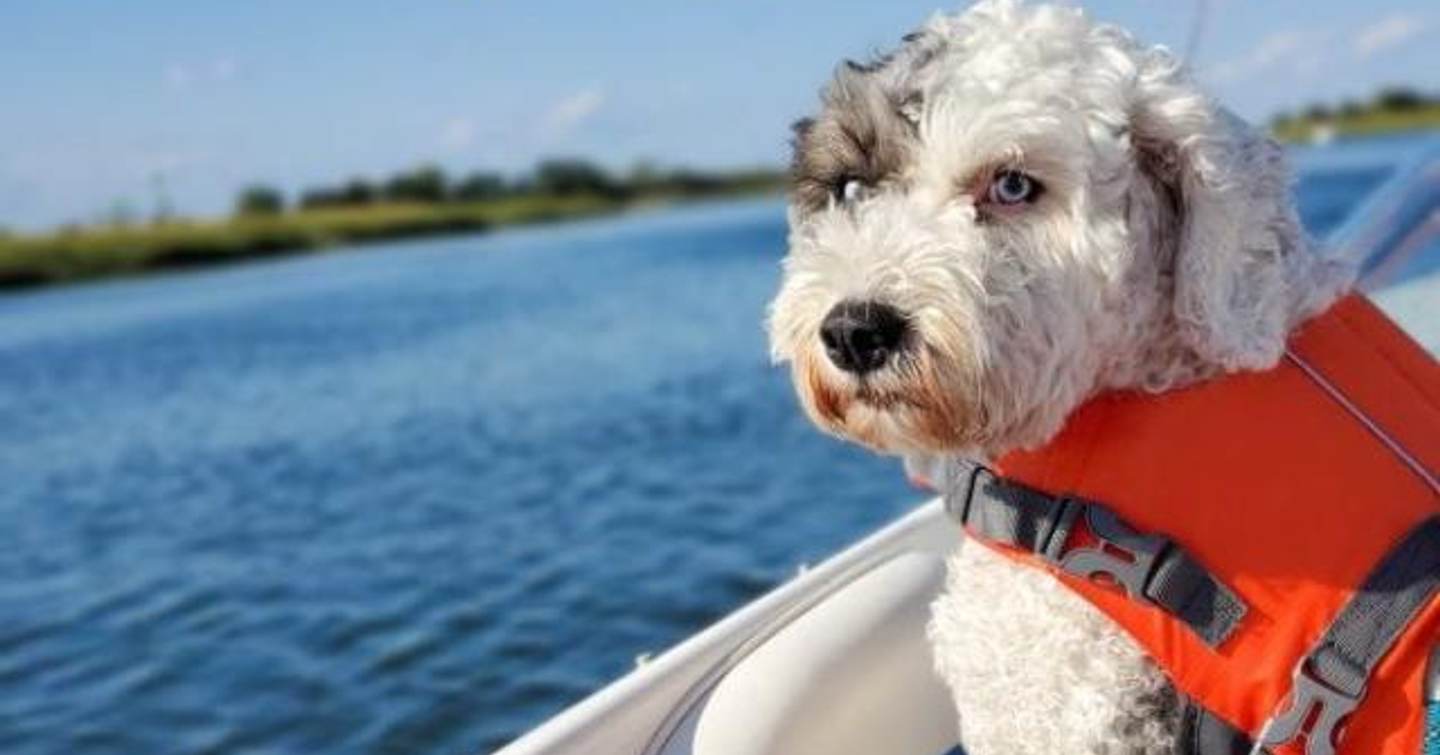
If you bring your dog on board, don't forget their safety. A dog life jacket with a top handle can be a lifesaver, as even good swimmers may need assistance getting out of the water, making it easier to lend a helping hand to your furry friend.
Liferafts - The Last Resort
While thankfully rare, accidents can happen to a yacht, ranging from collisions with obstructions to fires or catastrophic hull breaches. In such dire situations, the value of your life raft becomes abundantly clear. Abandoning a yacht is a last resort, but when it is necessary, the investment in your liferaft will prove its worth.
It's important to note that, unless your yacht is on fire, you should never step down into a life raft; instead, step up into it. This decision is grounded in logic: a floating yacht still offers more protection than what is essentially an inflatable raft covered by a tent.
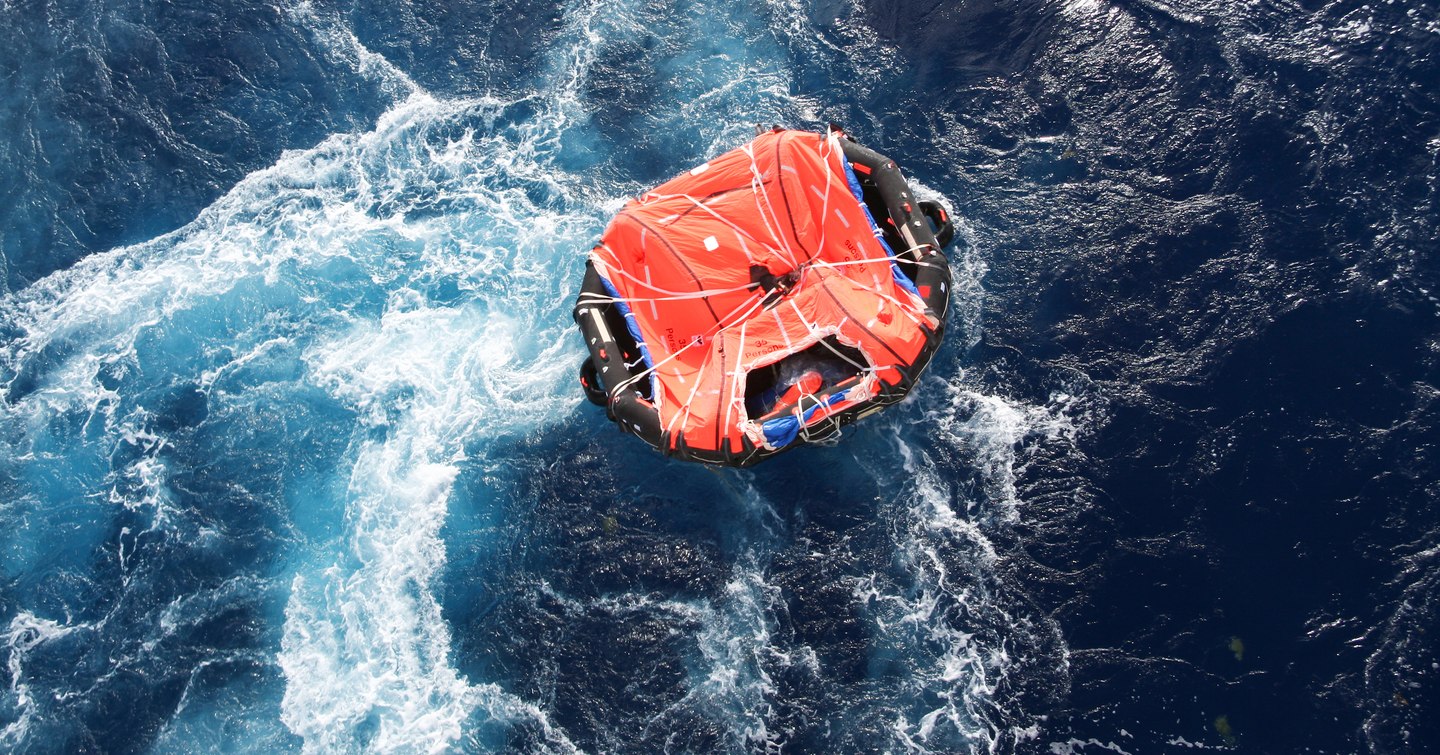
As a general rule, step UP into a life raft."
Liferafts come in two primary container styles, a valise (soft bag) and a canister (hard case). Valise rafts are typically more budget-friendly but should be stored in a dedicated locker, ideally on its own for quick access; this may be challenging on smaller yachts. A canister style can be fitted on deck, but then it's vulnerable to theft, so using a lock is advisable, provided you remember to unlock it before each voyage.
In many jurisdictions, vessels over a certain length, typically 13.7 metres (45 feet) or more, are mandated to have a life raft onboard as part of maritime safety regulations. Below that size, the life raft is an optional piece of kit though few would go to sea without one onboard (a four-man raft is the smallest practical size). When investing in safety equipment, a yacht owner must ensure compliance with the yacht's flag state and any relevant maritime laws.
Increasing Yacht Visibility - Radar Reflector
A radar reflector is a vital piece of equipment on a yacht designed to enhance visibility to other vessels. Essentially, it functions as a signal mirror for radar, bouncing back the radar waves emitted by other vessels and making the yacht more noticeable on their radar screens.
This improved visibility is essential for collision avoidance and overall maritime safety, particularly in situations of reduced visibility due to weather conditions or darkness.
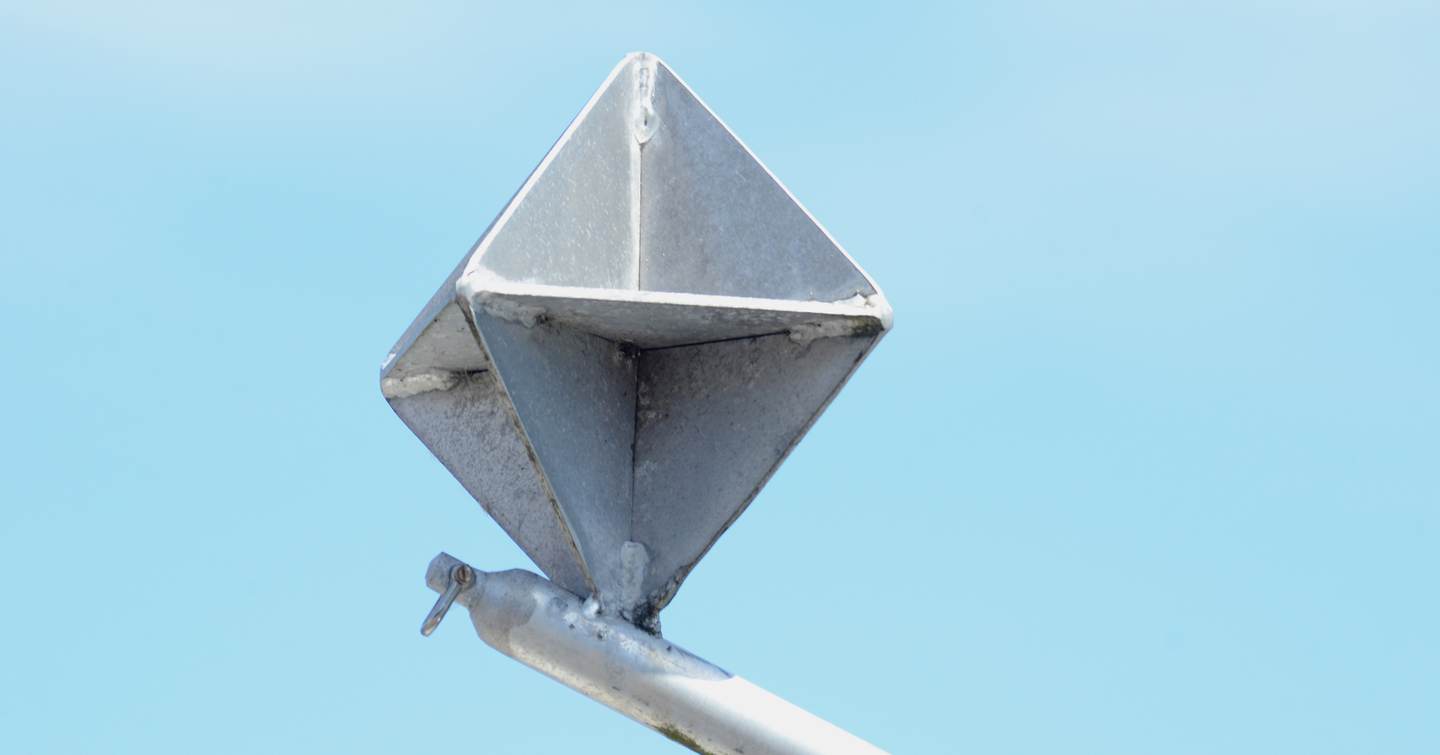
A radar reflector can take the form of a straightforward assembly of angled aluminium squares secured by plastic corners, or it can be conveniently purchased as a pre-assembled network of metal sheets enclosed in plastic casing. These passive radar reflectors work by boosting a vessel's radar echo, essentially achieving the opposite effect of stealth technology.
According to international regulations, specifically SOLAS (Safety Of Life At Sea), every vessel is obligated to carry a radar reflector onboard. Additionally, there are active radar reflectors, also known as active radar transponders, which receive radar pulses from other vessels, amplify them, and transmit them back. This transforms a yacht's radar signature into that of a larger vessel, making it highly visible on a ship's radar screen.
Highlighting the importance of radar reflectors, every life raft will be equipped with one.
Maritime Safety - Smoke Alarms on Yachts
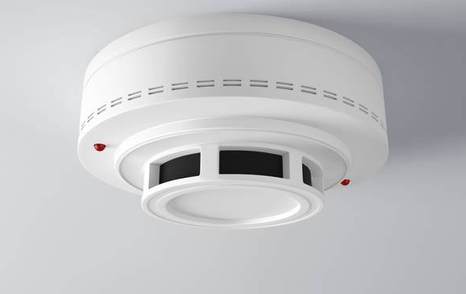
A fire can take over a yacht with alarming speed so early detection is key to decisive action.
A smoke alarm operates on a straightforward principle. Inside the alarm, there is a sensor that continuously monitors the air for the presence of smoke particles. When smoke enters the alarm and disrupts the sensor's normal operation, it triggers the alarm to sound. This early warning system is essential for detecting a fire in its early stages.
Smoke alarms should be tested regularly, using the easy-to-use test button on each set.
A smoke alarm will have its own independent, built-in battery supply, so even if there is a problem with the yacht’s electrics, the smoke alarm will still function. Ideally, every cabin should have its smoke alarm, as should each living space.
Cheap and Cheerful - the Value of a Softwood Bung
In the world of yacht maintenance, it might initially sound counterintuitive to drill holes in a watertight hull, but the reality is that boats rely on these openings. Whether it's to allow seawater in to cool the engine, or efficiently pump out waste, a yacht's hull needs these access points. At these hull penetrations, you will find skin fittings, and between these fittings and the pipes lies a seacock – much like a stopcock found in home plumbing.
This system works well, but skin fittings can get damaged, leading to the dreaded scenario of water rushing into your boat.
This is where inexpensive softwood bungs prove their worth. These tapered wooden stoppers are ingeniously designed to be inserted into the hole left by a failed seacock or skin fitting. The smartest approach is to attach an appropriately sized bung, securely fastened with a string, to each skin fitting. This precaution ensures that if a seacock were to break away unexpectedly, the bung is instantly available, ready to plug the hole and prevent water ingress – a small but essential addition to your yacht's safety arsenal.
SOLAS V Life Saving Signals Information *required by SOLAS V
First of all, let us briefly explain SOLAS.
In 1912, the sinking of the passenger vessel Titanic sent shockwaves through the world, not only for the loss of lives but also for revealing the glaring inadequacies in maritime safety regulations.
The disaster served as a catalyst for significant change in the maritime industry, and the first International Convention for the Safety of Life at Sea (SOLAS) was held in London in 1914, just two years after the disaster.
SOLAS aimed to establish comprehensive safety regulations for all aspects of vessel design, construction, and operation. Today, it stands as a testament to international cooperation and a commitment to ensuring the safety of all those who venture out to sea.
The SOLAS V (its fifth incarnation), provides a simple card explaining internationally recognized life-saving signals that any person or vessel can use to communicate with rescue units.
The SOLAS cards can be bought as tangible cards, or downloaded from online sites. Ideally, they will be visible in well-attended areas of the yacht, for example in the crew mess; they are often spotted affixed to the back of toilet doors, offering a touch of educational reading material in an unexpected place.
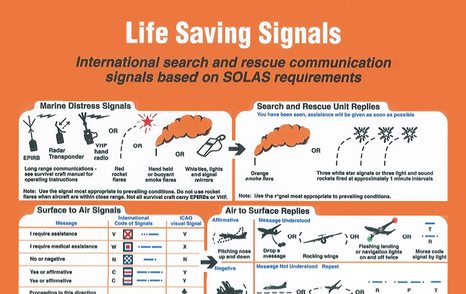
Quick Release - The Useful Throwing line
In the event of a person overboard incident, you will want to get them back onboard as quickly as possible. It is crucial to approach the situation with caution and precision and get them back onboard on the first attempt.

If the casualty is conscious and able to assist, a throwing line can aid recovery. The throwing line is a self-contained floating rope in a bag.
There will be a loop that the thrower must put around their wrist as it serves little purpose if the throwing bag reaches the person in the water but is not attached to anyone, or anything, onboard.
The bag is weighted to cover further distance, and brightly coloured to be easily seen.
Once they have the line, the thrower will tie the wrist strap around a strong point on the yacht, to prevent being pulled into the water if the person in the water panics and pulls on it. Slowly and controlled, the person can be pulled towards the yacht to a safe point, such as the bathing platform for easier recovery.
Shining a Light on Yacht Safety - Waterproof Torch
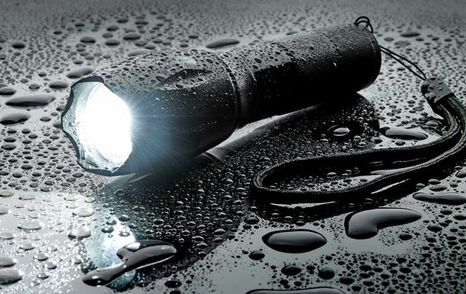
A waterproof torch is an essential piece of safety kit on a yacht but it must be used with caution. It takes a good 20-30 minutes to achieve a relatively useful night vision and the accidental glare of torchlight will remove that in the blink of an eye.
Used by a person at the bow, it can assist in navigating the yacht into a harbour or marina, or to highlight buoyage up a meandering channel. For general use onboard, a torch is a torch and generally a good piece of equipment to have around.
Using a torch is also an ideal method of attracting attention in an emergency situation. The internationally recognized signal for distress, SOS (Save Our Souls), is communicated through Morse code as three short flashes, followed by three long flashes, and then followed by three short flashes. Some torches provide the option of an automated delivery of this signal and can be left to flash away. For sure, a flashlight beaming this series of dots and dashes will certainly attract attention.
Blaringly Obvious - Whistle/Horn *required by IRPCS
Sound signals onboard a yacht are an integral part of maritime communication. They serve as a means of conveying important information to other vessels in various situations. Whether it's a short blast of the horn to signal an impending manoeuvre, a series of prolonged blasts to indicate distress, or the distinctive sound signals exchanged when navigating in reduced visibility, these auditory cues play a crucial role in maintaining safety and order on the water and adhering to the International Regulations for the Prevention of Collision at Sea (IRPCS).
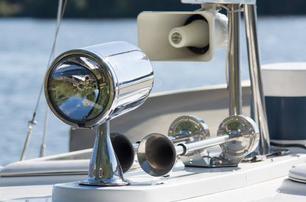
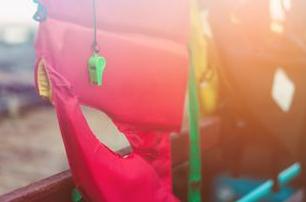

Familiarisation with the appropriate sound signals is not just a maritime tradition; it's a fundamental aspect of responsible yachting that ensures smooth and secure navigation.
There are options available to make a noise, from the simple gas air horn fuelled by a rechargeable canister that can be bought from any hardware store to sophisticated integral systems controlled from the bridge.
The SOS signal can be produced by any means possible: the blowing of a whistle, the sounding of a horn or even the banging of a drum in the distinctive pattern of three short, three long, three short will ensure your distress message is received.
Yacht Safety - Recommended Equipment
An Emergency Position Indicating Radio Beacon (EPIRB) is a compact device that, when activated in an emergency, transmits a distress signal to satellites, pinpointing the user's precise location for up to 48 hours.
Proactive Signalling to the Satellites - The Importance of an EPIRB

The signal consists of an encrypted identification number (all in digital code) which holds information such as the ship’s identification and the position of the stricken vessel.
Each EPIRB has a Unique Identifier Number (UIN) also referred to as the Hex ID.
The EPIRB should be registered with the flag state authority with the details of the yacht owner, contact details, emergency contacts, the type of vessel, maximum number of passengers, home port, etc.
Many EPIRB units come with self-launching cradles, ensuring that if your vessel were to sink without the opportunity to make a mayday call, the EPIRB automatically detaches from the sinking boat and transmits the distress signal.
EPIRBs significantly enhance the chances of a swift and successful rescue in critical situations, making them an indispensable tool for maritime safety and peace of mind on the open sea. The unit should be tested as part of the monthly routine safety drills, and serviced according to the manufacturer's instructions.
Optional Safety Equipment Onboard a Yacht
For Those Who Love Abbreviations - Introducing the AIS MOB SART
The AIS MOB SART, which stands for Automatic Identification System Man OverBoard Search And Rescue Transceiver, is a compact device designed to fit conveniently inside the cover of an inflatable lifejacket. This device operates within the AIS (Automatic Identification System) framework, a widely used system employed by ships and many yachts for purposes such as vessel identification, precise positioning, and collision avoidance.
Activation can be automatically upon submersion or when the activation clip is detached due to inflating the lifejacket. Once activated, the device broadcasts a distress alert to nearby vessels equipped with AIS technology, with an effective range of 4-5 miles. The alert is displayed on dedicated AIS screens or a vessel's navigation system, and provides the distressed individual's position, with a bearing and distance from the alerted vessel.
To fully utilise an AIS MOB SART, the yacht should be equipped with an AIS receiver, allowing access to the position data of the casualty to facilitate a swift response. This small device with a big name is an extremely valuable tool for efficient man-overboard rescue operations, especially in open water.
Personal Locator Beacon - PLB
A Personal Locator Beacon (PLB) employs the same technology as an EPIRB but is designed for individual use rather than for a vessel. These compact devices, typically smaller in size than a smartphone, can be easily affixed to a lifejacket or carried on your person.
The versatility of PLBs extends beyond yachting; they are invaluable for various outdoor activities such as skiing, hill-walking, climbing, and sea kayaking, providing a means to summon emergency services when needed.
PLBs cannot be automatically activated. Additionally, they lack the automatic triggering feature found in AIS/MOB SART devices, mentioned above, which can be attached to a lifejacket for automatic activation in specific situations.
With a typical shelf life of six years and a 24-hour duration once activated, PLBs are a useful piece of kit, and it’s interesting to note that new designs of yachting clothing now feature PLB compartments.
Jonbuoy MOB Recovery Module - Visibility and Stability
When planning adventures further afield on extended passages, the risk of a person-overboard situation becomes greater, exacerbated by the often unpredictable sea conditions offshore. In relatively small waves, a person in the water can be difficult to spot.
Enter the JonBuoy Recovery Module, a game-changer for maritime safety. This ingenious device resembles a compact, one-person liferaft equipped with an inflatable mast adorned with a flag and a light. Constructed from highly visible materials, the module serves as a beacon for both the rescuer and the distressed individual, providing a singular point of focus in the water.
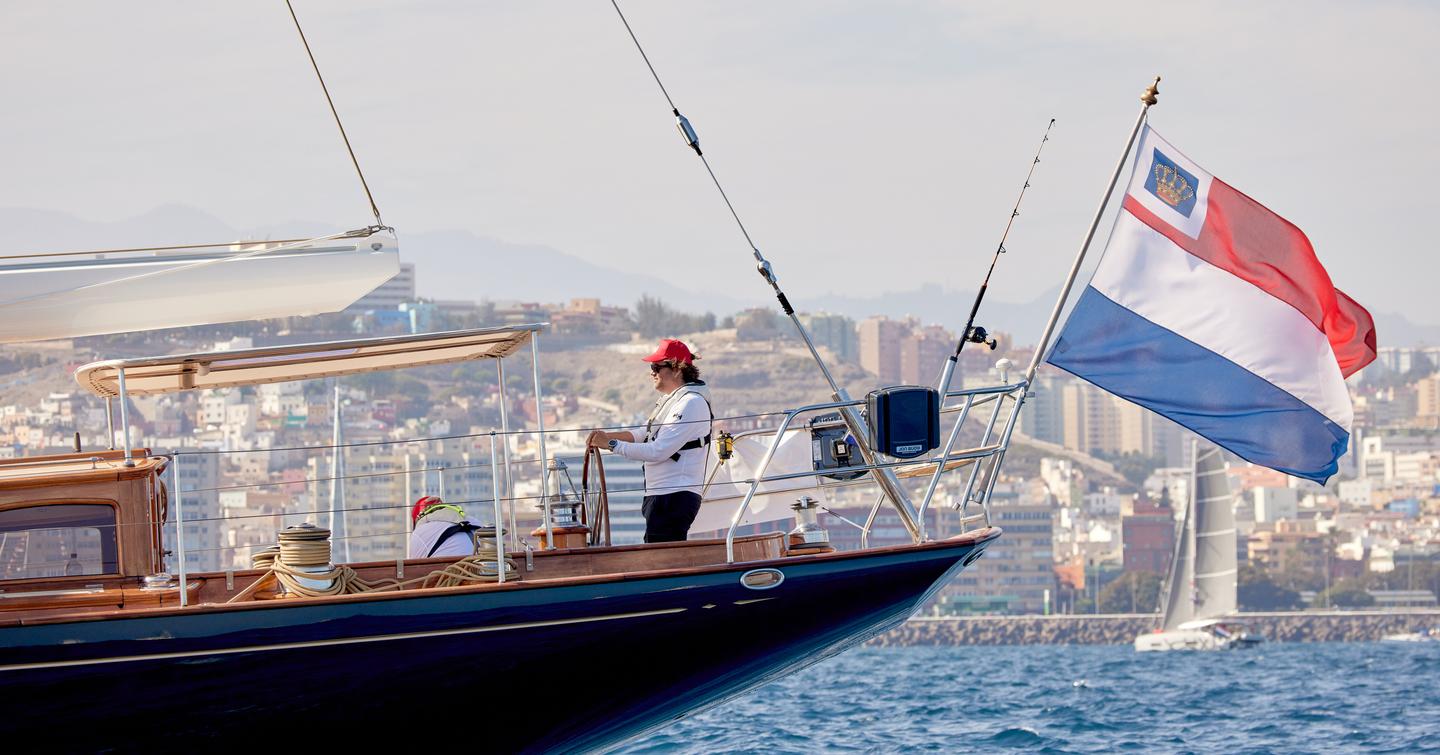
In the event of a person falling overboard, a witness simply unclips the JonBuoy unit from its mounting bracket and throws it into the water in the direction of the casualty. The unit will automatically inflate.
If the person overboard is conscious, they can use the module to self-assist. By pulling themselves onto the raft, they can safely, and relatively comfortably, await rescue by the yacht. The weighted ballast pocket on the underside of the unit will reduce drift and provide a reassuring stable platform. A JonBuoy Recovery Module is a well-designed asset and will certainly make a positive difference in a casualty in the water scenario.
Remote Vessel Monitoring System for Peace of Mind
If there is not a permanent crew onboard, a remote monitoring system is an invaluable tool for ensuring the safety and security of a yacht.
At its most basic, a GPS tracking device allows the yacht owner to track the yacht's precise position. At the upper end, the monitoring system can be integrated into the vessels CanBUS digital network.
For around €1,000 an owner can invest in a system that will check the yacht’s position, the temperature on board, provide entry alarms, shock alarms, movement sensors and even water sensors in the bilge.
The system uses the mobile phone network to relay the data to a smartphone, tablet or computer. To track the vessel’s position and receive data, a satellite communication module can be added to the systems.
Remote monitoring systems offer peace of mind for when a yacht in unattended, or even during a trip ashore when the yacht is left on anchor.
Equipment Summary
Essential equipment
|
|
|
|
|
|
|
|
|
|
|
|
|
|
|
|
|
|
|
|
|
Recommended equipment
- EPIRB
Optional equipment
- AIS MOB SART
- PLB
- Jonbuoy MOB recovery module
- Remote vessel monitoring system
